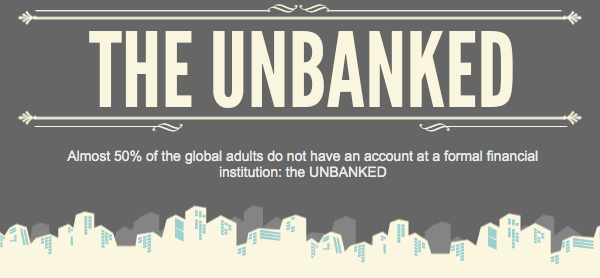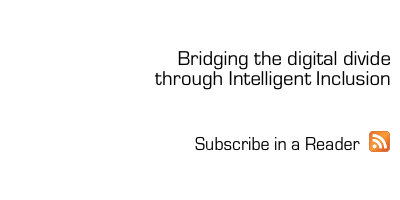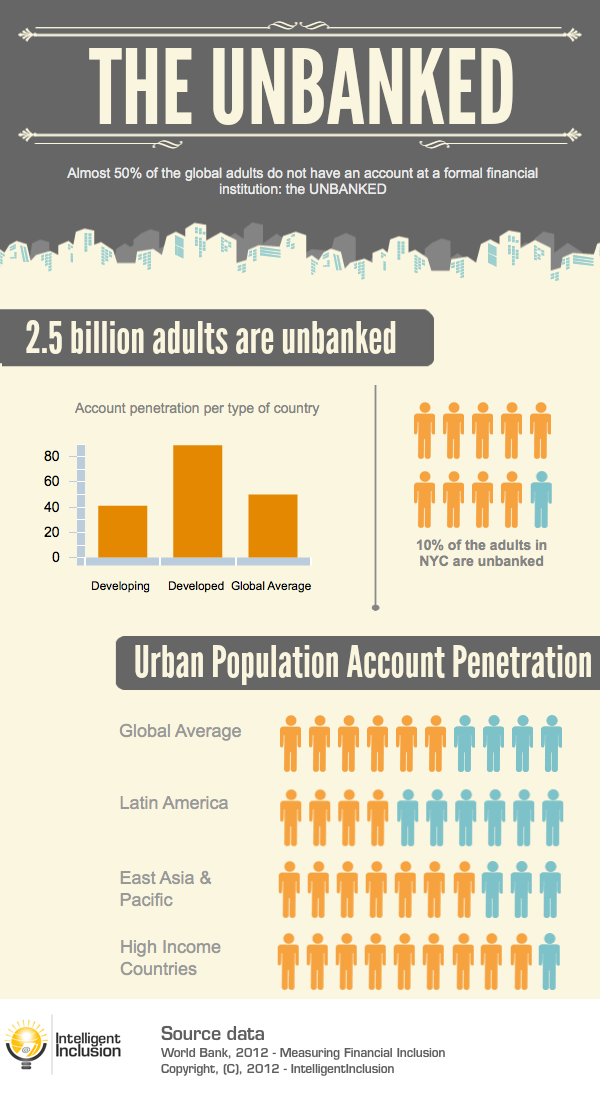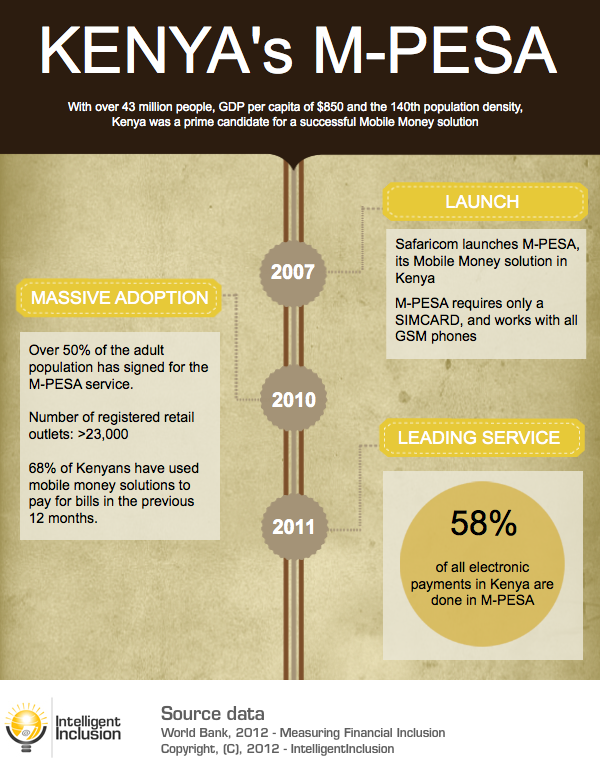
Mobile banking is always one of the hottest topics in any digital inclusion discussion. The possibility of offering banking services to people that currently do not have access to them is enticing, as the number of unbanked people in the world justifies the current initiatives.
According to banking definitions, an unbanked is defined as a person without an account at a formal financial institution. Globally the number is impressive, almost half of the global population is unbanked. Even in developed countries like the United States we have significant numbers: almost 8% of the population.
So, why our traditional banks do not offer their services to them? The main reason is a tricky combination of exceptionally low deposits with a spread population.
Developing regions are usually very large, sometimes with continental dimensions. Infrastructure is typically poor, telecommunications are limited to mobile phones, and security is a serious concern. Many villages have a small number of inhabitants, and are far from each other. Establishing branches in all of them would require significant financial investments, which would never have a return when we consider the level of the deposits. Using Kenya as an example, the World Bank stated that the average savings is only $3!
Traditional approaches do not work in this complex scenario, and some companies are betting in different models. With extensive experience in handling low-income subscribers in wide areas, mobile operators became the leaders in this new business. The first mobile money solution was implemented in 2001, growing to more than 140 in ten years. Among all of them, one is fascinating to study: M-PESA in Kenya.
Safaricom launched the service in 2007, with a simple setup: the service worked in all GSM phones with a special SIMCARD. M-PESA allows people to do the basic banking functions in their accounts: money deposit, withdrawal and transference. By doing everything by short message, M-PESA leveraged the wide coverage that Safaricom had already deployed. Simple and secure, it was a success: in 2011, M-PESA had more than 17 million active users. Retail outlets that have an M-PESA account have an advantage over their competitors, as users use their credits to acquire food and other small items. Kenya’s large slums have dozens of outlets, providing an increased income to the neighborhood.
M-PESA has been successfully deployed in Afghanistan and Tanzania, countries with regulatory conditions similar to Kenya. South Africa’s launch was below the expectations, and many analysts blame the additional regulatory requirements for the limited success.
And you, do you think that this is something that would work in your country?
Cheers,
Caetano Notari
Recommended Reading:
Internet is a basic human right – a resolution from the United Nations Human Rights Council
How can digital inclusion support the growth of a country? A quick look on this important topic.




{ 0 comments… add one now }
You must log in to post a comment.